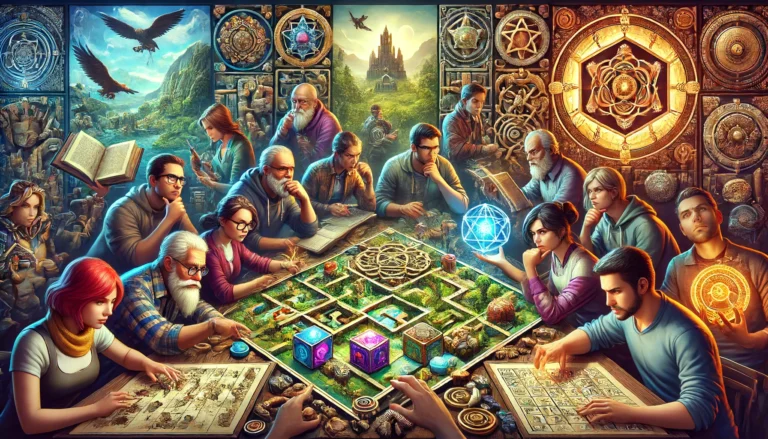The world of video games is ever-evolving, with each era bringing forth new innovations and experiences. Among the many genres that have captivated gamers, action-adventure games stand out for their unique blend of excitement, exploration, and storytelling. From the early days of pixelated heroes to the sprawling, immersive worlds of today, action-adventure games have undergone a remarkable transformation. In this article, we will delve into the fascinating journey of this genre, exploring its origins, key milestones, and the innovations that have shaped it over the decades.
The Dawn of Action-Adventure Games
Early Beginnings
The roots of action-adventure games can be traced back to the late 1970s and early 1980s. During this period, games like “Adventure” on the Atari 2600 laid the groundwork for the genre. These early titles combined elements of action and exploration, allowing players to navigate through mazes, collect items, and combat enemies. Despite their simplicity, these games were revolutionary, offering players a sense of freedom and discovery that was unparalleled at the time.
The Legend of Zelda: A Genre-Defining Moment
In 1986, Nintendo released “The Legend of Zelda”, a game that would forever change the landscape of action-adventure games. With its vast open world, intricate puzzles, and engaging story, The Legend of Zelda set a new standard for what action-adventure games could achieve. Players assumed the role of Link, a young hero on a quest to rescue Princess Zelda and defeat the evil Ganon. The game’s emphasis on exploration, item collection, and non-linear gameplay became hallmarks of the genre.
The 1990s: A Decade of Innovation
The Rise of 3D Graphics
The 1990s were a pivotal decade for action-adventure games, marked by the transition from 2D to 3D graphics. This shift allowed for more immersive and dynamic game worlds. Titles like “Tomb Raider” (1996) and “The Legend of Zelda: Ocarina of Time” (1998) showcased the potential of 3D environments, offering players a new level of depth and realism. Lara Croft and Link became iconic characters, representing the possibilities of 3D gaming.
The Influence of Role-Playing Games (RPGs)
During this period, action-adventure games began to incorporate elements from role-playing games (RPGs). Games like “Diablo” (1996) and “The Elder Scrolls: Arena” (1994) blended action with character progression, loot systems, and narrative depth. This fusion of genres expanded the scope of action-adventure games, allowing for richer storytelling and more complex gameplay mechanics.
The 2000s: Expanding Horizons
Open-World Adventures
The 2000s saw the rise of open-world action-adventure games, where players could explore vast, detailed environments at their own pace. “Grand Theft Auto III” (2001) revolutionized the genre with its sprawling cityscape, giving players unprecedented freedom to engage in missions, side activities, or simply wander. The success of GTA III paved the way for other open-world titles like “Assassin’s Creed” (2007) and “The Witcher 3: Wild Hunt” (2015), each offering their unique take on open-world design.
Technological Advancements
Advancements in technology played a significant role in shaping action-adventure games during this decade. Improved graphics, more powerful consoles, and better AI allowed developers to create more immersive and lifelike experiences. Games like “Shadow of the Colossus” (2005) and “Uncharted: Drake’s Fortune” (2007) pushed the boundaries of what was possible, offering cinematic storytelling and breathtaking visuals.
The 2010s: A Golden Age
The Emergence of Indie Developers
The 2010s heralded a golden age for action-adventure games, characterized by a surge in creativity and innovation. Independent developers began to make their mark, producing unique and memorable titles. Games like “Hollow Knight” (2017) and “Celeste” (2018) demonstrated that indie games could offer experiences just as rich and engaging as their AAA counterparts. These games often focused on tight gameplay mechanics, artistic design, and emotional storytelling.
The Impact of Online Connectivity
Online connectivity became increasingly important during this era, influencing the design of action-adventure games. Titles like “Destiny” (2014) and “Dark Souls” (2011) incorporated online elements, allowing players to connect, cooperate, or compete with others. This added a new layer of depth and replayability, as players could experience the game world in ever-changing ways.
The Present and Future of Action-Adventure Games
Current Trends
Today, action-adventure games continue to evolve, embracing new technologies and trends. The integration of virtual reality (VR) and augmented reality (AR) offers new ways to immerse players in game worlds. Games like “The Legend of Zelda: Breath of the Wild” (2017) and “Red Dead Redemption 2” (2018) exemplify the genre’s ongoing commitment to innovation, combining vast open worlds with intricate gameplay mechanics and storytelling.
The Future of the Genre
Looking ahead, the future of action-adventure games appears bright. As technology continues to advance, we can expect even more immersive and interactive experiences. The potential for artificial intelligence (AI) to create dynamic, responsive game worlds is particularly exciting. Additionally, the increasing accessibility of game development tools means that we will likely see even more diverse and innovative titles from both indie and established developers.
Conclusion
The evolution of action-adventure games is a testament to the power of innovation and creativity in the gaming industry. From their humble beginnings to the expansive, immersive experiences of today, these games have continually pushed the boundaries of what is possible. As we look to the future, it is clear that action-adventure games will continue to captivate and inspire players around the world.
How Action-Adventure Games Have Evolved Over Time
Action-adventure games have undergone significant changes since their inception. Here’s a breakdown of the critical stages in their evolution:
- Early Beginnings: Simple 2D games with basic exploration and combat mechanics.
- Genre-Defining Moments: The Legend of Zelda set new standards with its open world and intricate puzzles.
- Transition to 3D: Games like Tomb Raider introduced immersive 3D environments.
- Incorporation of RPG Elements: Titles like Diablo blended action with character progression.
- Open-World Adventures: Grand Theft Auto III revolutionized the genre with its expansive cityscape.
- Technological Advancements: Improved graphics and AI allowed for more lifelike experiences.
- Indie Developer Emergence: Games like Hollow Knight showcased the creativity of indie developers.
- Online Connectivity: Titles like Dark Souls integrated online elements, adding depth and replayability.
- Present Trends: Embracing VR and AR, with games like The Legend of Zelda: Breath of the Wild continuing to innovate.
- Future Prospects: Advances in AI and accessibility of game development tools promise a bright future for the genre.
By understanding these stages, players and enthusiasts can appreciate the rich history and ongoing evolution of action-adventure games.







